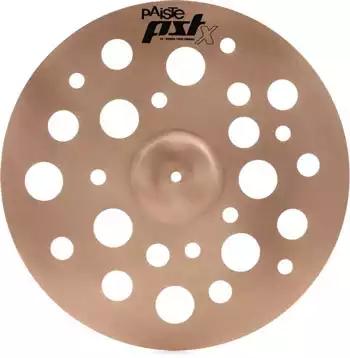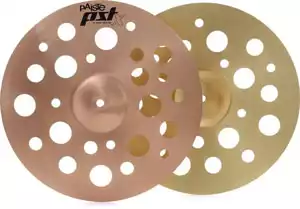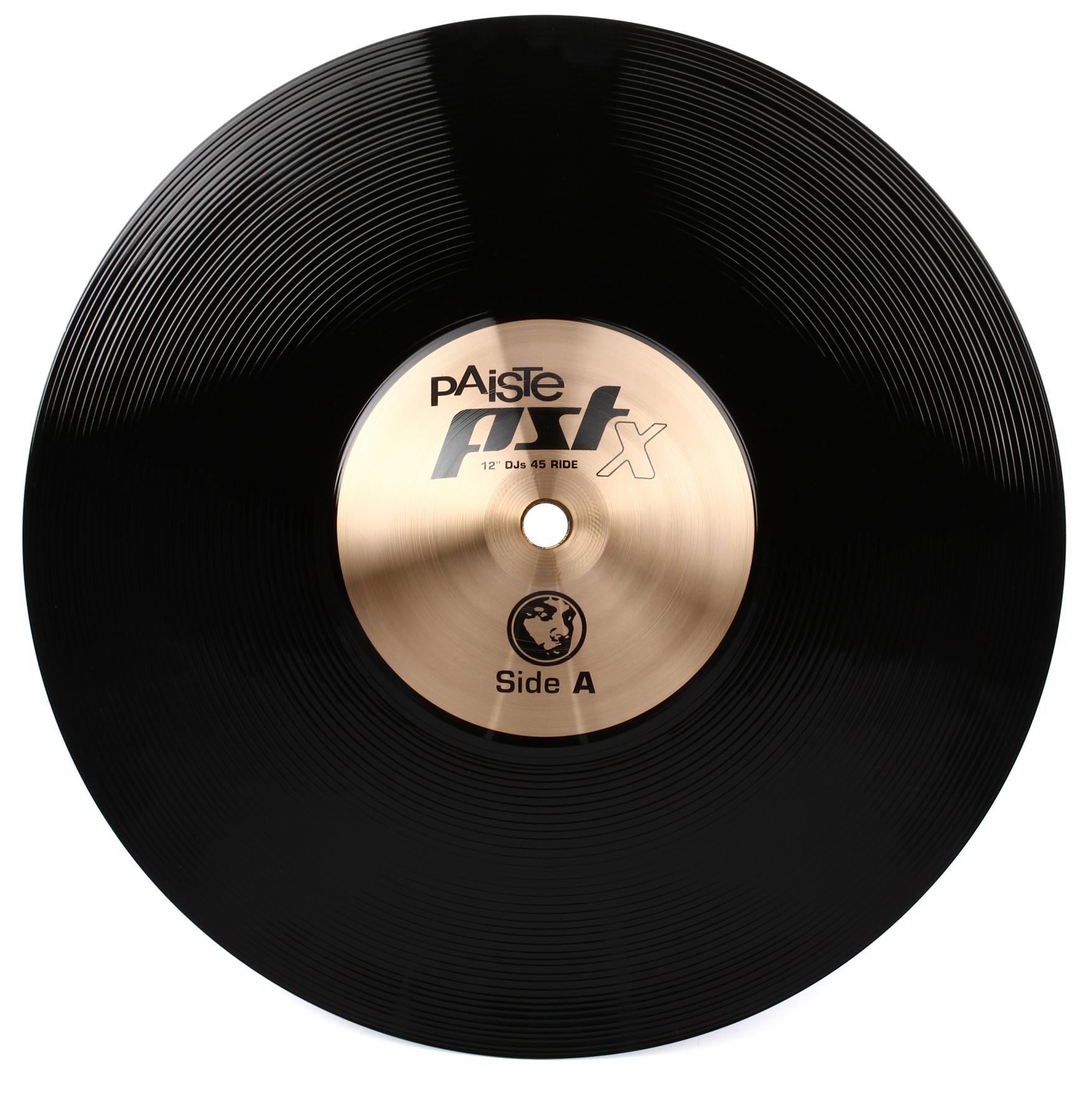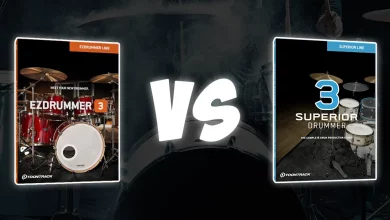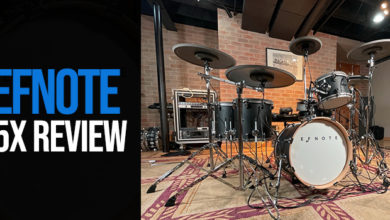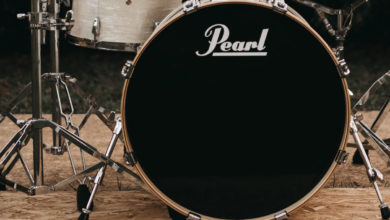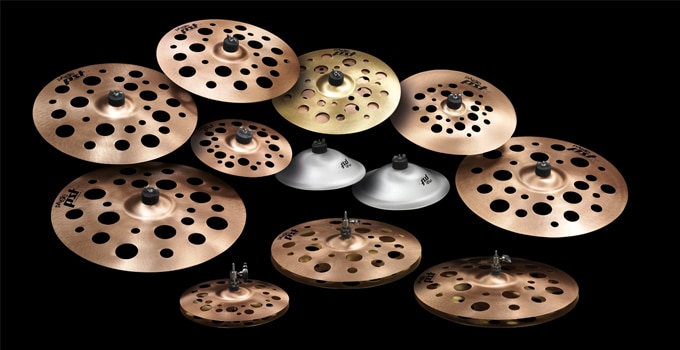
We may earn a commission from the affiliate links on this site. Learn more›
The Savior of the Cash-Strapped, Experimental Drummer?
If I had a million dollars, I’d have the best drum kit in the whole wide world. I don’t know which model it’d be. I don’t know which type of wood I’d choose. I don’t even know what color it’d be.
What I do know is that it would come with hundreds of cymbals. We’re all different. Sometimes all I want is to sit with a kick, snare, and hi-hat to lay back into the pocket and keep a groove ticking.
Nevertheless, I never get tired of exploring the endless possibilities that come from a new cymbal or three.
Unfortunately, I don’t have a million dollars. I haven’t won the lottery, and I’m not a world-famous player with multiple endorsement deals. Like most drummers, I have to be a little selective in what I choose to purchase.
If you’re in the same cymbal-loving boat as me—and you’re not a millionaire either—I’ve got a piece of great news for you!
There’s at least one range of cymbals that sit at a super reasonable price point and yet still manage to offer a whole world of exciting color. At least, that’s the theory.
Let’s see how the Paiste PST X FX cymbals stack up (pardon the pun) in practice.
Paiste PST X Series Overview

The PST X line features a wide variety of bells, stacks, crashes, splashes, rides, and hats. They all look—with no exceptions—a little weird, with most being very much reminiscent of the Sabian’ O Zone’ range. Most of these cymbals are crafted from Paiste’s 2002 bronze, inlaid with a brass alloy, although some aluminum offerings are too.
Take a moment to Google the PST X line, and you’ll notice that most of them are on sale for between $100-$200, so this should be a serious consideration for you if you’re looking for fascinating sounds at a low cost.
Without further ado, let’s dive into some of these cymbals’ quality in the PST X series. We’ll start with the crashes.
Swiss Thin Crash 14″ 16″ and 18″
18" Crash Cymbal with CuSn8 Bronze Alloy and MS63 Brass/Aluminum Formulations.
Several different crash options within the PST X range are divided into thin, medium, and flanger crashes. There’s also a ‘Cajon Crash’ which—according to Paiste—contains ‘woody’ tones, and an intriguingly named ‘DJs 45 Crash‘ (Daru Jones’ contribution to the line).
Reviewed here are the three thin crashes. I like all of the PST X thin crashes. However, the smallest crash (14″) is a little weak sounding to my ears. It’s almost splashy, so it works for accents and some hit sections.
It explodes into life immediately and tails to a fast decay. The 16″ sounds a little fuller and retains its little brother’s explosive quality, leading to a slightly longer decay.
The 18″ is noticeably fuller, and the larger size carries on into a longer decay time. Both the 16″ and 18″ will work for accenting and work in other contexts too—with the 18″ being the most “musical’, in my opinion.
These cymbals aren’t incredibly complex, tonally-speaking. But it doesn’t feel as though they’re trying to be: they’re straight-up raw. They’re white noise-y and powerful.
Minor problems occur, though, as I discovered during a quiet, ambient gig. I was new to these crashes and forgot just how quickly they burst into life.
I struck my 16″ crash a little too enthusiastically. It cracked through the air like lightning, making the whole band jump—and a few audience members also. It was kind of hilarious, but I only made that mistake once!
Played on their own, the 14″ and 16″ can sound a little too raw. In some ways—played solo—they don’t sound totally different from some of the unbranded discs of cheap metal that come with some low-end budget kits.
They’re better quality by far but contain a similar, unabashed trashiness. In the context of a groove, however, it’s a different picture.
Anything even vaguely reminiscent of those budget mentioned above metals is forgotten. The 16″ sounds excellent over my 22″ kick and 13″ brass snare, with the drums adding ‘body’ to the cymbals.
In this context, they bark with a desert-dry burst of tone, which manages to be pleasantly aggressive without succumbing to over-harshness.
Like all thin crashes, they’re super easy to get moving, but they also feel a little delicate under the stick. They’re also a little hard to ‘ride’ on since they give way under the stick too easily. They sometimes don’t seem to come back quickly enough to play fast eighth notes.
I’ve used these thin crashes in gigs at medium-size venues (one thousand capacity) and recording with rock bands.
They’ve held up nicely to some relatively heavy playing, and to be honest, the lower price point is even more appealing when you remember that you don’t have to be too overly-cautious with them.
They don’t feel irreplaceable, and it’s less likely to feel tragic if one breaks a little (not that mine have). Nevertheless, I can imagine a metal drummer cracking through these almost quicker than their sticks, so there’s the same ‘fast sound/fragile cymbal’ trade-off that exists with all thin crashes, and you can decide if it’s a trade-off worth making.
Swiss Hats 10″ 14″ and 16″
14" Hi-hats with CuSn8 Bronze Alloy and MS63 Brass/Aluminum Formulations (Pair).
As with all fx cymbals, most people will probably either love or hate these. All three hats give a rough, sandy sort of tone. They sound like they’ve been heavily processed with music production software and deliberately made low-fi and raw with bit crushing distortion.
The 10″ hats sound a little thin when closed, but they sit over the kick and snare nicely. I can imagine them being useful in a drum’n’bass/electronica context.
Played open, they illicit a ‘splashy’ sort of tone which—to me—lacks a little body (in the same way the 14″ thin crash does). This could be an advantage when pedaled, though, because this creates a feather-light, subtle chick, which is excellent in the context of a groove.
The overall tone is certainly different from that of your typical hi-hat, and I can certainly see why someone would find the 10″ s useful as a second pair of hats.
The 14″ hats are—in my opinion—the pick of the bunch.
They retain the trashy bark, which is so characteristic of the whole range, but they have more body than the 10″ hats.
The closed sound is relatively thick and the open sound is less splashy than the 10″ hats. These hats sound fuller and more balanced.
They sit well within the groove context, and while they’re probably a little too quirky to use as a main hi-hat in most genres, they’re very useable as a second pair.
The 16″ hats continue the trend for a fatter sound than the smaller sizes. They have a very thick closed and open sound, and the chick sound which comes from pedaling the hi-hat is pretty huge too!
For me, they’re perhaps a little too fat and maybe a little too big under the sticks again, and the larger size makes them harder to control when they’re half-open. They’re quite hard to tame.
This criticism may amount to personal preference, though—I usually favor 13″ hats for their crisp, compact sound and feel anyway. I can imagine a heavy hitter enjoying these: they feel like they’ll stand up to a little extra punishment.
If you’re playing in a real loud band, these should hold their own nicely against some big guitar amps without getting lost in the mix. That said, they’re probably best used sparingly—unless you want to give your bandmates tinnitus!
Rides – DJ 45 12″ Ride
The DJ 45 may be the most unusual offering of the PST X line up. I mentioned that hip-hop session supremo Daru Jones had contributed to the PST X line, and this is the ride that bears his name.
It’s initially reminiscent of a heavy splash—retaining the same tone, but with a slower attack than most splash cymbals. It has a bigger bell than most splashes, too.
The bell elicits a pleasant ‘ting’ sound, which—given the small size—might struggle to cut through some mixes but certainly adds something different to the usual tonal palette found in most people’s cymbal setups.
It’s perky, neat, and sounds cool when paired with a small, tight snare and a smaller kick drum. It sounds good played on the edge, too: it’s harder to get moving than splashes of the same size, so it’s more comfortable to ride on, and it resonates for longer.
Finally, it’s almost impossible not to mention the cool look of this cymbal. It looks like a vinyl record, with its golden bell and jet black body. Break it out at any gig, and it’s sure to bring curiosity and admiration from one or two band members—and maybe one or two interested audience members too.
It’s quieter than most rides, and—given its tiny size—it doesn’t contain much wash. But if you’re playing a quiet-to-medium volume gig and you fancy something a little different, the DJ 45 Ride is well worth checking out.
14″ Swiss Flanger Stack
Indeed no FX range is complete without a half-decent stack, and the PST X range certainly offers that! There are smaller splash stacks available in the range, but the 14″ on review provides a pleasant playing experience.
As with most stacks, it’s pretty crisp, staccato-y and it’s a great tool for playing fast, trashy accents without leaving any over-tones to muddy the mix.
You can loosen the stack—which lends a little resonance to the sound—or you can tighten it up to kill the resonance completely.
As with other cymbals in the PST X range, the 14″ stack is a little thin-sounding on its own. It’s also a little ‘sludgy’ when loosened. It does blend well with the rest of the kit, though. Because of all those high frequencies dancing around, it should cut through the mix nicely.
Should I Buy a PST X Cymbal or Two?
Look, I have to be honest – these are inexpensive cymbals (remember that many retail at under 100$, and most sit around $150). I think the sound quality reflects this – mostly when the cymbals are played on their own.
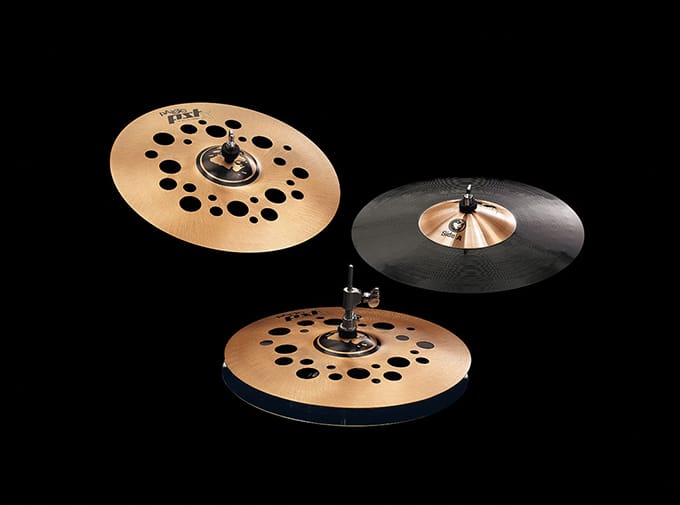
Sabian’s O Zone range sounds a little ‘richer’ and more complex to my ears. They’re also more expensive to buy. In my experience, the PST X’s sound substantially better in a mix than they do when played solo—even playing just them in the context of a groove seems to make a world of difference.
Most drummers will buy them with specific scenarios in mind, usually where there’s a need for something a little quirky, different, or experimental.
But they’re enjoyable, and the fact that they’re inexpensive means that you won’t be too precious about striking them hard now and then and dragging them around to all kinds of gigs.
If you were going to buy any low budget cymbals, an FX cymbal probably makes sense since they’re not usually supposed to sound sonorous and beautiful in the way that—for example— a nice ride cymbal is.
Overall, I think the PST X line is more fun than not. The cymbals I’ve played are more useable than not, and—as long as you don’t expect a top-line work of sonic-art, they’re certainly very playable.
They offer drummers a wallet-friendly way to experiment with a wide range of exciting sound-worlds. Check them out at your local store, or listen online with some decent headphones. I doubt you’ll be disappointed!

About the Author
Chris Witherall is a pro drummer, producer and songwriter from London, England. He loves talking about music, and helping people to reach their music goals.

